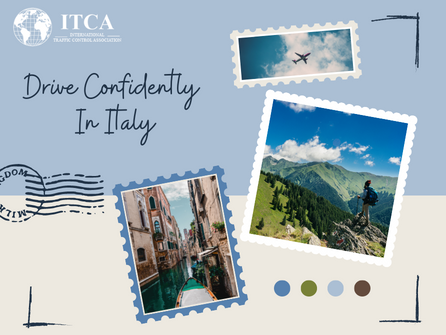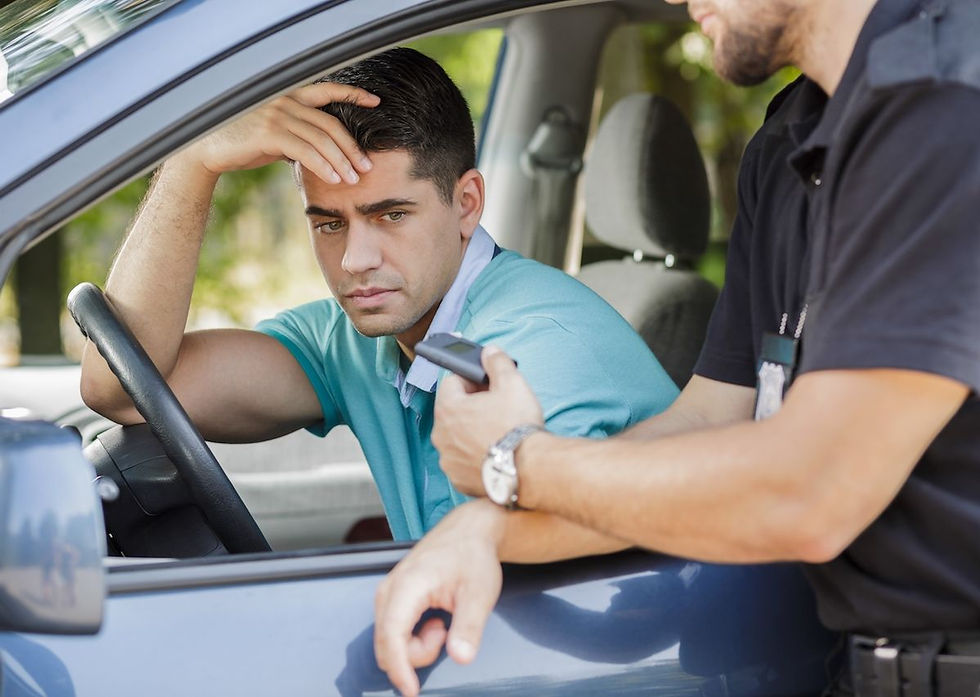Italy Driving Guide
- Travel Guiders
- Feb 23, 2023
- 6 min read
It is understandable why so many people think of Italy as their dream vacation destination, with its gorgeous beach villages, breathtaking architecture, and isolated communities. Italy is renowned for its beautiful landscapes, delectable cuisine, and kind inhabitants. So what's holding you back from travelling to this idyllic European nation?

Before purchasing this ticket, you should know a few things if you're preparing to take that ideal vacation. This guide has everything you need to know about Italy, including procuring an international driving permit Italy, driving restrictions, prohibitions, automobile rentals, and major tourist spots.
How does this guide assist with driving in Italy?
Many people's dreams of driving in Italy have come true. Modern-historical hybrid statues and structures are more appealing, enjoyable, and liberating. Can you drive here, though? Our in-depth driving guide will give you the confidence to drive if you're nervous about driving in the country.
Basic information
Italy, a country in southern Europe, is famous for its delectable cuisine and lovely architecture. Millions of visitors come to the nation each year from around the world, attracted by its lively culture and turbulent past. However, before you fantasize about eating Italian pasta and Neapolitan pizza, you must know the country's travel restrictions and security precautions.
Geographical area
Italy is a nation in southern Europe that borders Greece, Romania, Austria, Spain, and France. This boot-shaped nation protrudes into the Mediterranean Sea and is connected to the south by the Alps, the Po River, and islands like Sicily. Italy is renowned for its beautiful scenery, and many regions of the nation are home to untamed mountains and clear lakes.
Each city in the nation is unique, with its food and accent, as few highways link places in this rocky environment. In addition, the country's hilly geography contributes to its typically moderate temperature. But if you travel to southern Italy, you will find stunning coastlines. In reality, the nation boasts a variety of landscapes that are suited for different kinds of tourists.
Land size
Sicily and Sardinia are part of Italy's 301,230 km2 of territory. Sicily occupies approximately 25,708 km2 of the mainland's 1,185 km long and 381 km broad. On the other hand, Sardinia covers 24,090 square kilometres (9,300 square miles).
International Driver's License for foreigners
If you want to complete all the requirements and adhere to the traffic laws, exploring Italian cities and towns by car may become one of your most treasured experiences. An International Driving Permit (IDP) is one of the prerequisites for driving in Italy's cities and towns by car, which may become one of your most treasured experiences. An International Driving Permit (IDP) Italy is one of the prerequisites for driving in Italy. A travel document, an IDP, enables you to operate a vehicle abroad.
Does Italy need a foreign driver's licence?
For up to six months, foreigners must get an international driving permit to drive in Italy. You must present both a local and an international driving licence when renting a car in Italy. You must still provide the authorities with your IDP even if you drive in Italy with a US licence.
Renting a car in Italy

Discovering Italy is like unwrapping a trunk of the most exquisite objects you've ever seen. Although the country's public transportation system is superb, most visitors still rent vehicles to reach the key tourist spots. Rural locations and coastal communities are both conveniently accessible by automobile. You should know a few things about renting a car in Italy before you begin your internet search for the ideal vehicle.
Automobile rental
You may hire a car in Italy if you hesitate to use the country's public transportation system. It is simple to locate a reputable automobile rental agency in Italy.
Required paperwork
Driving in Italy requires the same documentation needed to rent a car. A valid driver's licence, identity card, credit card, and passport visa with a minimum one-year expiration date ,and international driving license must be presented to the automobile rental agency.
Italian road regulations

Driving in Italy is a dreamlike, free experience that allows you to travel from one place to another. The Italian government is pleased to help tourists navigate Italy and warmly welcomes them. The Highway Code is not an exception, though. Italian driving regulations are simpler to adhere to in nations where driving is done on the right, including those in the European Union. It might be challenging for those unfamiliar with left-hand drive countries at first, but it gets easier after a few trips.
Key guidelines
You must remember that some driving regulations must be obeyed when driving abroad. Therefore, please follow the fundamental rules that are in effect in Italy. Breaking them will result in fines.
Drunken driving
Italy is well-known for its Neapolitan pizza and pasta meals and nationwide wine tastings. Although it is a wine-producing nation, driving while intoxicated is not permitted. Italy has a far lower alcohol limit than most European nations—just 0.5 milligrammes per millilitre. Drivers working as professionals or with less than three years of experience cannot drive while intoxicated.
The best action is to refrain from consuming alcohol while driving if you don't want to get into problems. The police will do a sobriety test if you are in an accident. It's advisable to have someone else drive or use a cab service if you really must have a glass of wine. Alcohol can impact your perceptions and response time, making it more challenging to operate a vehicle safely. The easiest way to prevent these risks is never to drive while intoxicated.

Penalties for drunk driving in Italy
Depending on the damage your careless driving causes, breaking the drunk driving laws in Italy might land you in significant legal trouble. Fines, the seizure of a vehicle, and, worst of all, incarceration are all possible penalties. In addition, driving while intoxicated lengthens the journey and puts other people in danger of harm or even death. The following are the consequences of drinking and driving:
1.5 g/l and higher: penalties ranging from €1,500 to €6,000 and 6- to 12-month terms of imprisonment.
164 to 663 euros and 5 fewer points on a driver's licence for drivers under 21 for 0 to 0.5 g/l.
0.5-0.8 g/l carries penalties of €531-2,125 and a 3-6 month suspension of your driver's licence.
Parking
Particularly in urban areas and ancient cities, parking in Italy may be particularly challenging. The authorized parking spaces, often underground, fill up rapidly in the city centre. Parking on the sidewalk or the curb is the only alternative, so parking is free in painted white places.
You must pay for parking and display the ticket outside your vehicle if it is painted blue. Please be aware that time restrictions exist on how long you may park in metered spaces.
Legislation governing the use of seatbelts
Both drivers and passengers travelling by car in Italy are required to buckle up at all times, whether seated in the front or the rear. To lower the number of road deaths, seat belt use was implemented as a safety precaution.
Speed restriction in Italy
Authorities have placed speed cameras on almost every route nationwide to enforce speed limits properly. A speed camera may photograph your automobile, record your speed, and determine if you follow Italy's posted speed restrictions. There is no escape from Italy's speed cameras, which can be seen when driving on motorways and along the side of the road.

The speed restrictions are as follows:
City area:
50km/h
Highway:
130 km/h or 110 km/h in rainy weather
Minor roads outside metropolitan areas:
110 km/h or 100 km/h in rainy weather
Local streets:
90 km/h or 80 km/h in rainy weather
Travel direction
To reduce traffic congestion, roundabouts are used at road junctions. Roundabouts are where most Italian highways end; therefore, you must know the regulations when you're at one. It's essential to understand which lane to use while entering a roundabout. You should drive on the right in Italy and yield to vehicles on the left. Also, signal your destination before leaving the roundabout to alert other motorists.
Age Limit for Driving in Italy
The minimum driving age in Italy varies depending on the vehicle type. The legal driving age in Italy is 18, as in other nations; however, be aware that most car rental companies do not hire cars for anyone under 21. But in Italy, you must be at least 16 years old to operate a motorcycle up to 125 cc and at least 14 years old to use a moped up to 50 cc.
Rules for overtaking
In Italy, overtaking must be done to the left. Therefore, avoid overtaking at junctions, bends, hilltops, railroad crossings, and places with limited sight. In Italy, driving also involves sharing the road with trams. You can pass the tram on the right if there is room. Pass trams carrying passengers at a safe distance. Be sure you can see where you're going before passing and that no other car is coming up behind you. Please turn on your turn signal to alert other drivers that you are about to pass them. Go back into the right lane after passing, allowing plenty of space for the vehicle in front of you.
Driving while a visitor
With a current driver's licence and IDP, visitors can easily drive in Italy. As an international driving license Italy permits them to drive on Italian roads. You can go to Italy in your vehicle if you satisfy the prerequisites

Comments